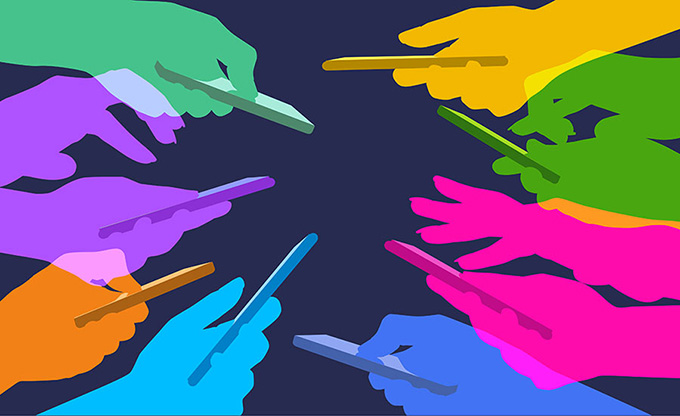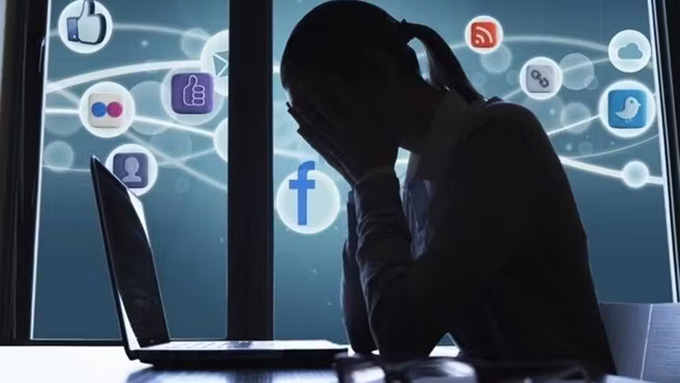
Can a single individual change the opinion, or influence the emotions of a group of people? What is the impact of a social group on our behavior? Social influence is the power of interaction with other individuals to influence our positions, beliefs, and values. It is key when we analyze violent behavior.
People experience an innate need to be accepted and approved, especially by members of our community. This need is intensified in adolescence, when most young people yearn to belong to a group and at the same time seek their independence. During this stage, social interaction plays a crucial role in the development of their self-perception and self-esteem.
It is precisely in this context where social behavior and the use of social networks have a great impact on the lives of adolescents. These platforms become a tool to seek approval and feel part of a group
According to social learning theories , people acquire aggressive and violent behaviors by observing and imitating others. This can lead to the repetition of patterns of violence and intolerant attitudes, which are often assumed to be a normal part of daily life.

Children victims of violence
Worldwide, one third of students between the ages of 11 and 15 have been bullied by their peers in the last month.
The fact that violence is present in the lives of at least 1 billion girls and boys causes significant wear and tear on their physical and emotional well-being and on their state of mental health. It is not always visible, as many of them believe that being victims of violence is part of everyday life.
People who witness violence in their family environment, at school, in the community and on social networks are more likely to engage in violent acts, both inside and outside their home. In addition, those who have been victims of violence in the past are more likely to perpetuate it and reproduce the patterns they previously experienced.
In this way, violence becomes a phenomenon that is transmitted, similar to a disease. Exposure to violence or being surrounded by people who have lived violent experiences and have aggressive behaviors can lead us to forge learning based on negative and transgressive forms of interaction .
Media and networks
Social networks have become an element that integrates our culture and are very powerful tools that allow the dissemination of information, communication and social interaction. In these spaces, the power of social influence is manifested, both individually and collectively.
The ease of accessing social networks and the large number of people who use them have helped guarantee the right of access to information. However, it is important to consider the increase in digital violence within these platforms.
The path towards observing violence in social networks
In Mexico, according to data from INEGI (2021) , 17.7 million people who used the internet through different electronic devices suffered some type of cyberbullying in 2021.
Some situations reported during that year include the use of false identities, offensive messages, sexual content, sexual advances or proposals, taunting, offensive calls, identity theft, tracking accounts or websites, criticizing appearance or social class, threatening to publish personal information, audio or video for extortion, publication of personal information, photos or video, and the sale of images and videos with sexual content.
Digital violence in social networks has become a priority for attention by public health and education authorities.
Make visible and raise awareness
Therefore, it is essential to understand the responsibility that the use of social networks entails, due to the power they have over nature and the behavior of people, as well as their social influence on more than half of the world population that uses them. .
It is a great challenge for both individuals and institutions to assume the responsibility and consequences of violence and the power of social influence, both collective and individual, which requires attention from the political, educational, social and health spheres.
It is increasingly common to observe media lynching on social networks towards people who become a trend due to some act of exposure of their public life, making them the object of a discourse full of aggression and even threats of physical aggression. Unfortunately, in the context of social networks, this influence can lead us to reproduce violent behavior towards other people or normalize it as part of our daily lives.
But at the same time, social networks and digital platforms can implement clear policies that prohibit and penalize violent speech and behavior . In the same way, from school and home, it is important to recognize and make visible the use of violence in our daily interactions to promote learning based on empathy, understanding and values such as tolerance and respect.
Author Bio: Aurea Mercedes Hernandez Romero is Professor at the University in Guadalajara. psychologist. Master in Health Psychology and currently PhD student in Cognition and Learning at the University of Guadalajara